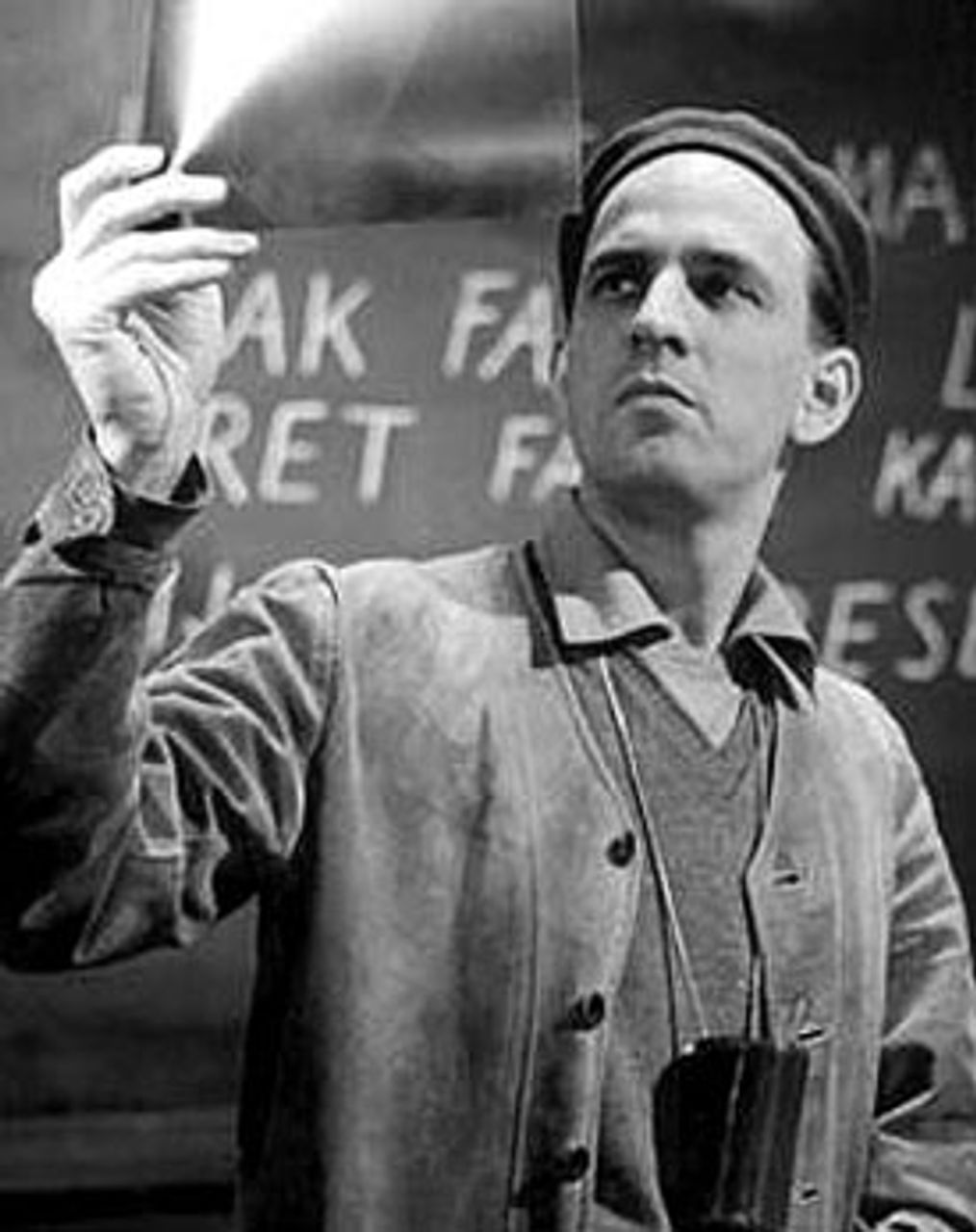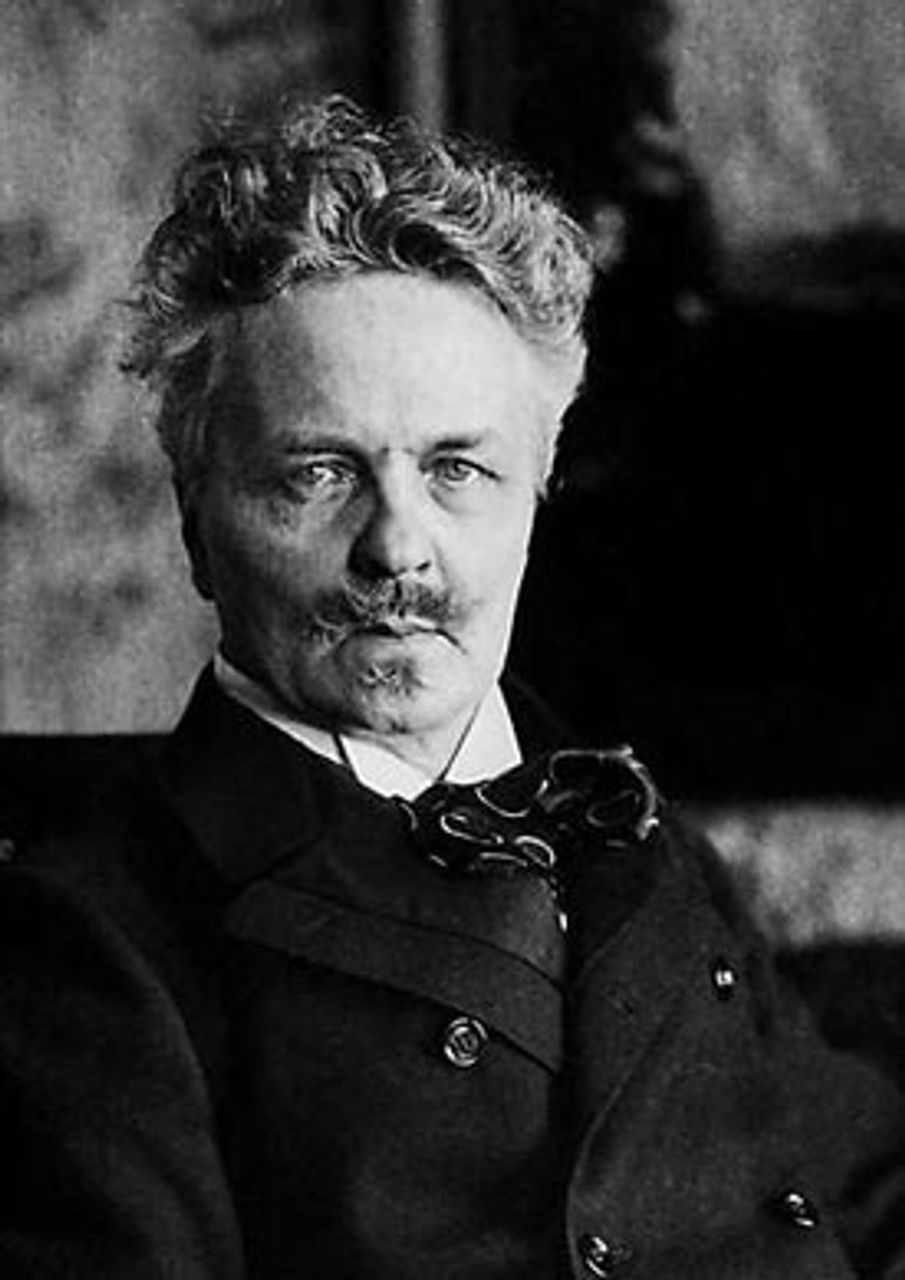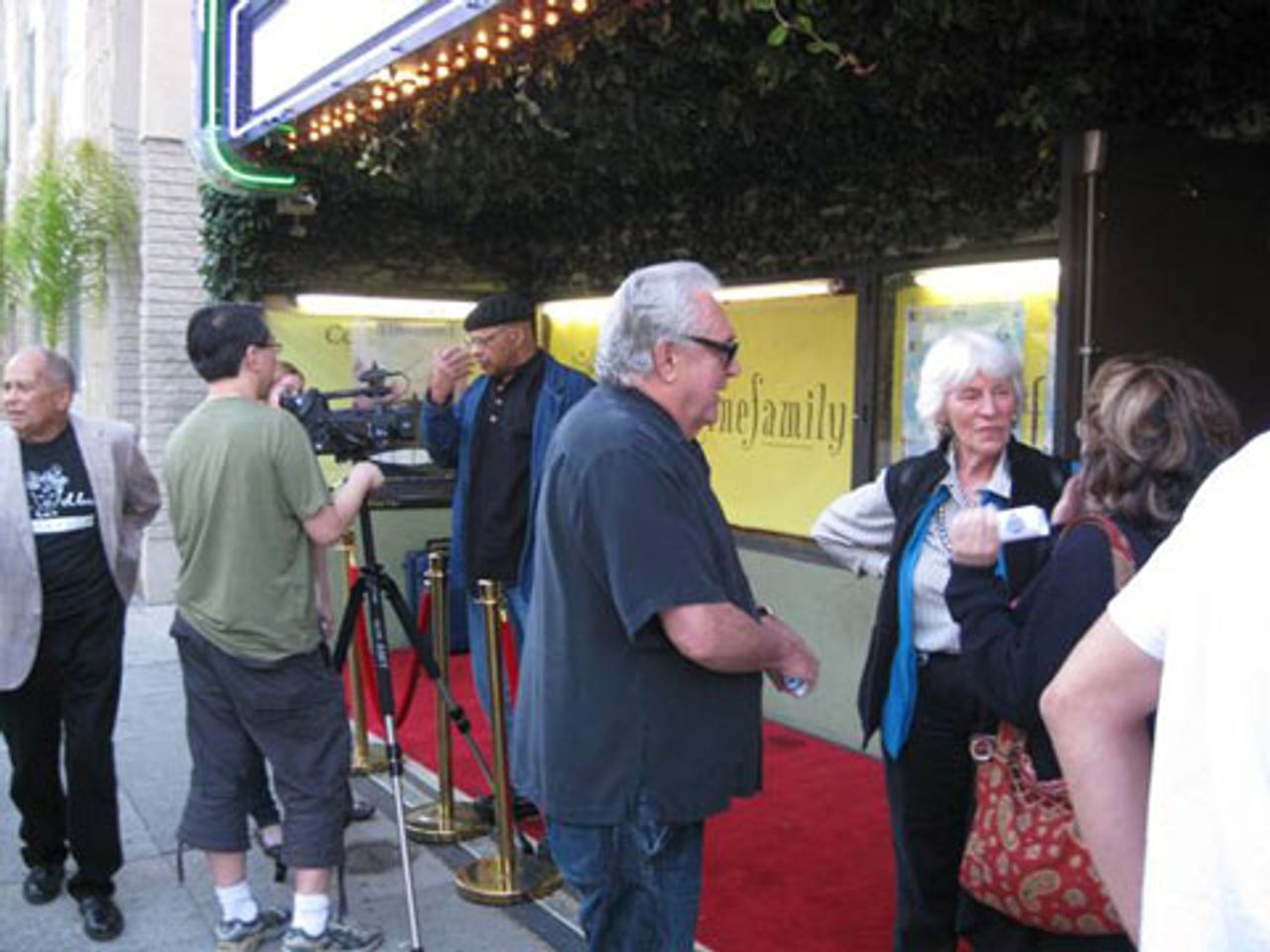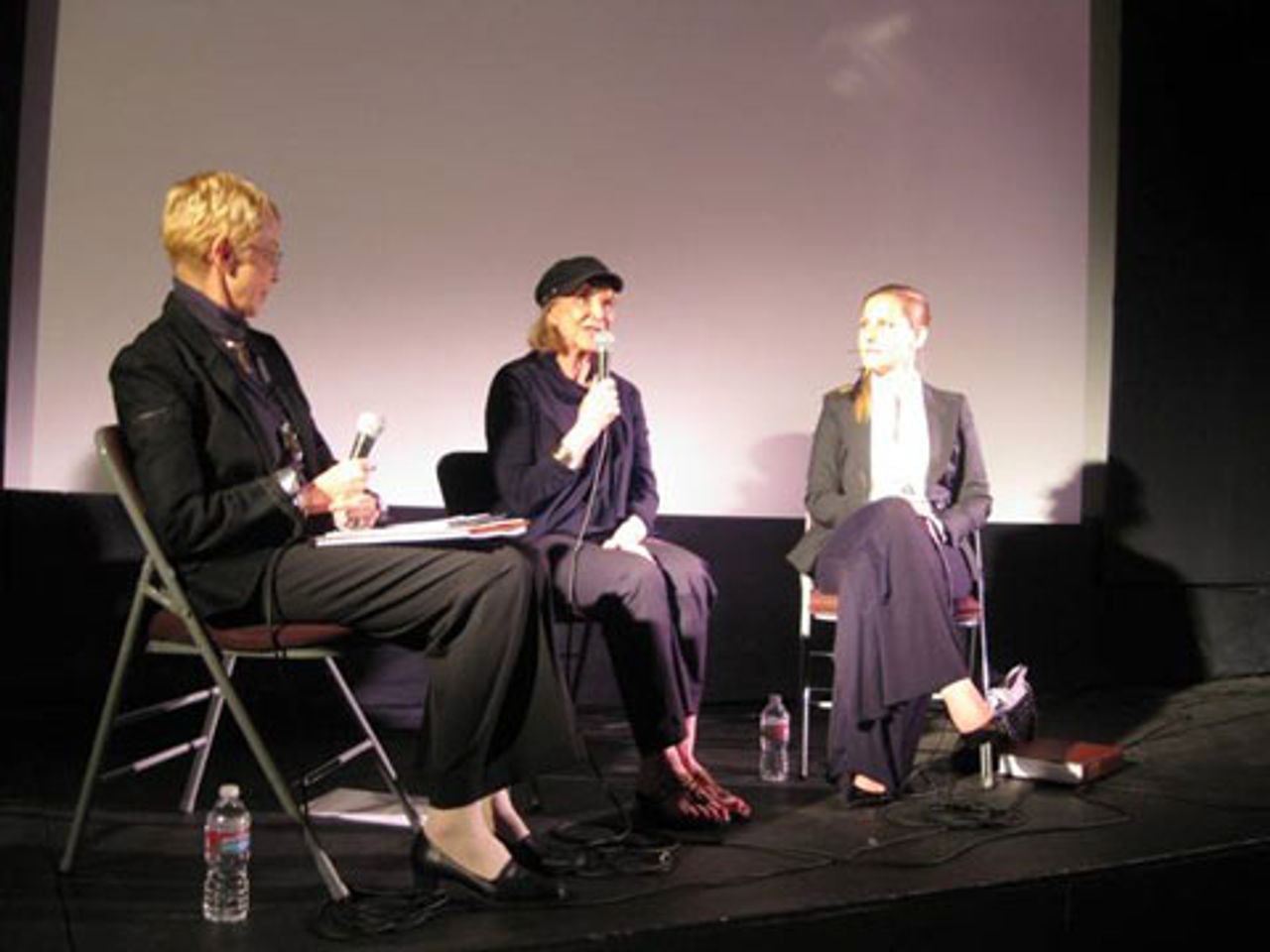Strindberg & Cinema: A Film Festival, presented by the August Strindberg Society of Los Angeles at the Silent Movie House, May 8, 15 and 22, 2012.
 Ingmar Bergman
Ingmar BergmanThe second night of the Strindberg & Cinema Festival featured two films that Ingmar Bergman made for Swedish television: a filmed production of August Strindberg’s A Dream Play (1963) and Bergman’s acclaimed self-portrait of a theatre director, After the Rehearsal (1984). While After the Rehearsal was released internationally as a feature film after initially airing on Swedish television, this was the first time that A Dream Play had been shown in North America.
Typically, this site is reserved for commentary on new work, but there are times when an unexpected juxtaposition casts old and even supposedly familiar works in fresh and deeper perspectives. It had been some twenty years since I’d seen After the Rehearsal. I remembered it as a wry, often insightful, at times pointed commentary on the art of theatre, especially the elusive arts of directing and acting.
I’d filed the experience in the same corner of my private memory palace along with Truffaut’s Day for Night (1973) and Fellini’s 8 ½ (1962). That comfortable and sophomoric take on the film was roundly shaken and reconfigured by the experience of seeing it again through older, more experienced eyes, and from the advantage of having just seen Bergman’s filmed version of A Dream Play.
Over his long career, Bergman mounted some thirty productions of works by Strindberg (1849-1912), including four different productions of A Dream Play: this 1963 filmed version was the first, followed by stage productions in 1970, 1977, and 1986. Luckily, I read a synopsis of the play prior to the screening, which was in the original Swedish, without subtitles, and which needless to say, made the intensely dialogue-heavy film hard-going for the non-Swedes in the house. With the exception of a few judicious cuts, Bergman’s shooting script faithfully followed Strindberg’s play script.
 August Strindberg
August StrindbergFor those unfamiliar with the play, it is one of Strindberg’s most poetic and philosophical. Like a dream, time and place and age are fluid. The narrative, such as it is, involves the Daughter of the Hindu god Indra coming to Earth to gain some understanding of what it means to be human. She’s guided in turns by three men—an Officer, a Lawyer, and a Poet. She discovers the constant struggle and suffering of the human condition, at first observing, then experiencing that elusive blend of hope and despair that keeps humans keeping on despite life’s many tolls, obstacles, and disappointments.
In a revealing 2003 interview conducted a few years before his death, Bergman describes his near-obsession with Strindberg’s work, a compulsion that began when he was fourteen and consumed him right to the end. One of his last productions was a radio version of Strindberg’s chamber play, The Pelican. Bergman always considered the Daughter in A Dream Play as one of the most compelling women’s roles in the Strindberg canon, perhaps in all of dramatic literature. The only Strindberg plays that Bergman returned to as often were Miss Julie and Ghost Sonata. Many have observed that Bergman’s 1984 Fanny and Alexander is a loose, contemporized adaptation of A Dream Play.
 (Felton Perry et al) on the Red Carpet - Stringberg & Cinema Film Festival
(Felton Perry et al) on the Red Carpet - Stringberg & Cinema Film FestivalIn this filmed version of Strindberg’s original, he cast the great Swedish actress Ingrid Thulin (1926-2004) in the role of the Daughter. Thulin also starred in Bergman’s Wild Strawberries (1957), The Silence and Winter Light (both 1963), and Cries and Whispers (1972). Significantly, in After the Rehearsal, Thulin plays the ghost of the old actress who haunts the director and is also the mother of the young actress who torments and/or seduces the director.
In After the Rehearsal, a twenty-nine-year-old Lena Olin plays the brilliant yet insecure young actress who’s playing the role of the Daughter in the director’s production of A Dream Play. With the director’s role being a thinly veiled self-portrait of Bergman himself, personal and professional resonances multiply until they’re so thick with emotional and subtextual overtones it’s almost impossible to sort them out—which is more or less the point of the film: That for the artist, life is the source of the art and the person is its instrument. The film’s compelling insights into what constitutes the art of acting, including the role of the director himself who is often forced to “act” in order to get what he or she wants from a cast, still speak to every performing artist.
That Ingrid Thulin, who played the Daughter in Bergman’s 1963 film of A Dream Play, appears as the current Daughter’s dead mother, a famous and disturbed actress, lends After the Rehearsal much of its dream-like and internalized quality. Further swirling life and art is the fact that Lena Olin herself would, two years later, play the role of the Daughter on stage in Bergman’s 1986 stage production of the play, a production that was nearly derailed when, just as the young actress in After the Rehearsal announces that she’s three months pregnant two months before the opening, Olin too became pregnant during the rehearsals of the play.
There are also the parallels in the complicated love ties between Bergman and Thulin with the complex relationship of director Henrik Volger (Bergman’s mask) and the ghost of the old actress. And then, running just beneath the surface of these turbulent waters is the story of Strindberg himself—of which Bergman and the others were presumably well aware.
Strindberg wrote A Dream Play in the wake of his near psychotic break following the shattering of his third marriage to the acclaimed actress, Harriet Bosse. He was 52 when they married; she was 22. She’d achieved her fame by starring in Strindberg’s King Gustav. So when, in After the Rehearsal, the old director “walks” the young actress through the specific stages of a love affair that could—but never will—happen, the effect, so moving even without understanding the tangled subtexts of the actual writer-director and actresses’ lives, becomes nearly electric. With a whisper of incest insinuating itself into the director/actress romance, the scene achieves the kind of moral confusion and complex humanity that is the very hallmark of Strindberg’s best work.
 Anne Charlotte Harvey, Hariette Garelick, Otilliana Rolandson - film fest panel 5-15
Anne Charlotte Harvey, Hariette Garelick, Otilliana Rolandson - film fest panel 5-15August Strindberg was catapulted to fame by his 1879 novel The Red Room which savagely satirized the hypocrisies and corruption of Swedish society, attacking its suffocating pieties and class pretensions. Strindberg’s critics labeled him as an angry young socialist and radical. But Strindberg’s fiery intellect and profound emotional instability kept him from approaching social issues with the analytical clarity of his great Scandinavian contemporary, Henrik Ibsen. While students and practitioners of theatre may be familiar with his more celebrated plays, it’s too often forgotten that Strindberg was astonishingly prolific and that many of his plays address issues that plagued the society in which he lived and worked. Bergman’s productions of Strindberg tend to favor the playwright’s philosophical and psychological concerns over his political ones.
Had I not revisited After the Rehearsal after having just seen A Dream Play, and had I not been alerted to some of these complicated overtones and tangled relationships by Anne-Charlotte Hanes Harvey, the noted dramaturg and translator who conducted a brief panel discussion with Hariette Garellick (the Swedish actress who worked with Bergman and, at one time or another, with most of the cast of A Dream Play) and Ottilana Rolandsson (a scholar who’s studied Strindberg’s influence on Bergman), I might have been content to leave my memories of After the Rehearsal in a safe, uncluttered cubby somewhere. But having experienced the messy and unsettling complexities of these works, that memory palace has just gotten a much needed and long overdue rearranging.
Congratulations to the Strindberg Society for shaping such a provocative Festival and doing so much to shatter prejudices about an author who, too often, is caricatured as merely the embodiment of Nordic angst and emotional torture.
